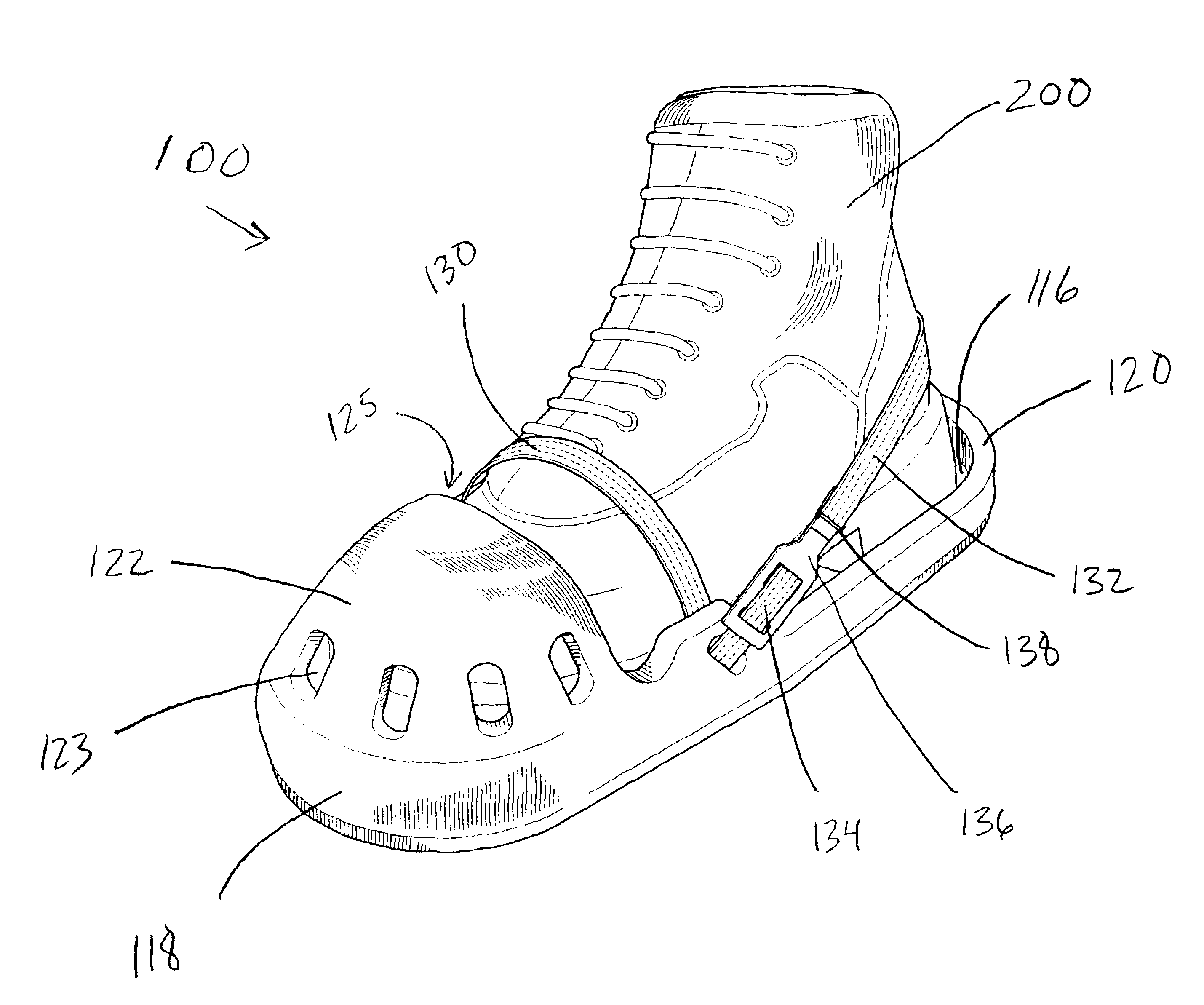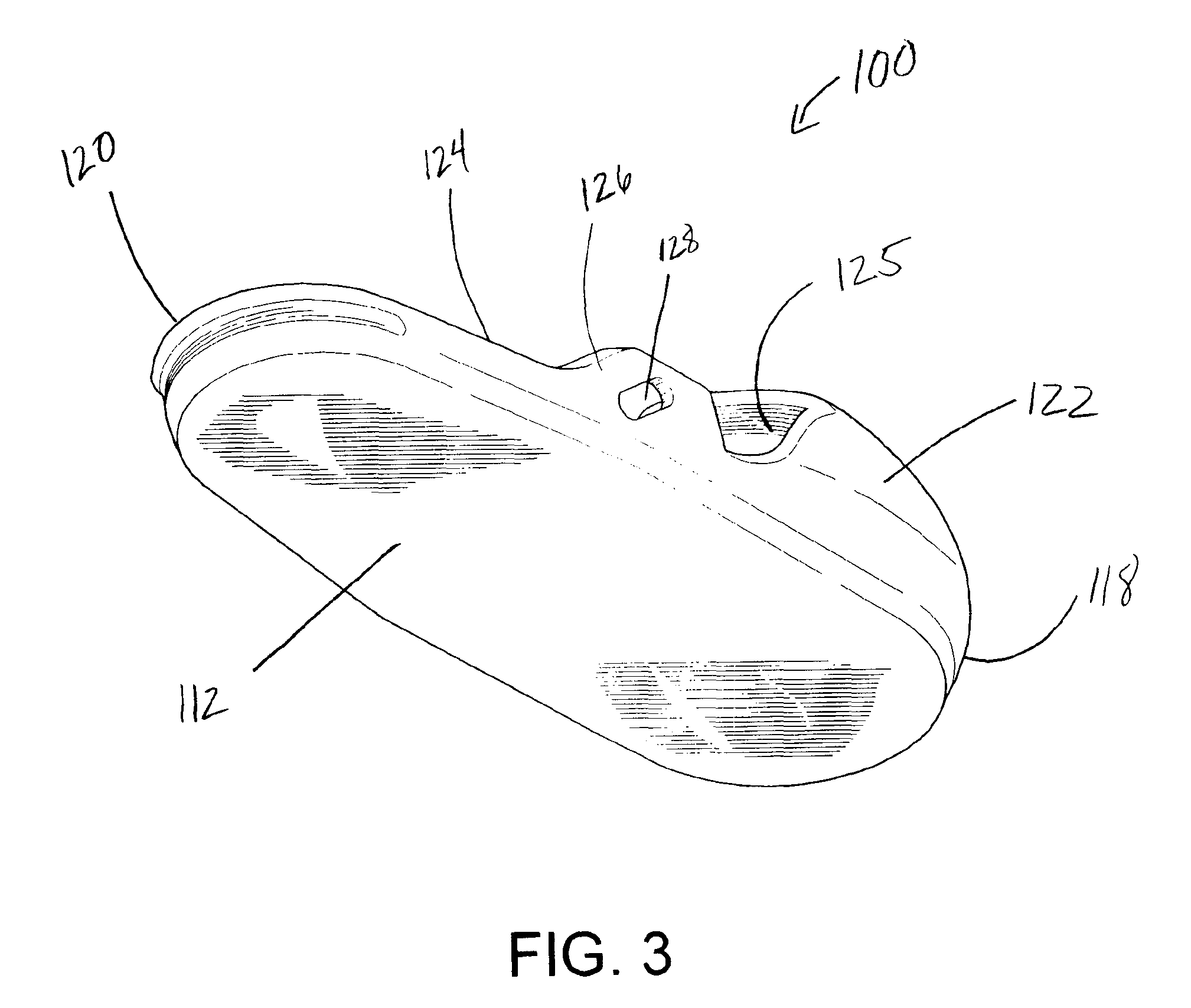Overshoe for use while finishing concrete
a technology for finishing concrete and overshoes, which is applied in the field of overshoes for use while finishing concrete, can solve the problems of lugging treads often picking up dirt and other debris, additional work is required to finish and smooth the top layer of concrete, and wet concrete presents an obvious problem, so as to achieve significant abrasion resistance, prevent localized pressure points, and strong construction
- Summary
- Abstract
- Description
- Claims
- Application Information
AI Technical Summary
Benefits of technology
Problems solved by technology
Method used
Image
Examples
Embodiment Construction
[0019]Reference will now be made to the attached drawings, where the same reference numerals are used throughout the various views.
[0020]Referring to FIGS. 1-5, where the same reference numerals are used throughout the drawings, the invention is an overshoe 100. As shown in the figures, the overshoe 100 is dimensioned and configured to be worn over another type of footwear or shoe (hereinafter generically referred to as a work boot 200). For purposes of brevity only, the following description is limited to an overshoe 100 dimensioned and configured to carry such a work boot 200. The following description is limited to an overshoe 100 dimensioned and configured to be worn on wet concrete. However, the invention explicitly encompasses sizes, dimensions, and construction materials having the same claimed elements that are dimensioned and configured to be worn over other types of footwear and on other types of surfaces.
[0021]FIG. 1 is a side plan view of the overshoe 100. The overshoe 1...
PUM
| Property | Measurement | Unit |
|---|---|---|
| perimeter | aaaaa | aaaaa |
| non-hygroscopic | aaaaa | aaaaa |
| length | aaaaa | aaaaa |
Abstract
Description
Claims
Application Information
 Login to View More
Login to View More - R&D
- Intellectual Property
- Life Sciences
- Materials
- Tech Scout
- Unparalleled Data Quality
- Higher Quality Content
- 60% Fewer Hallucinations
Browse by: Latest US Patents, China's latest patents, Technical Efficacy Thesaurus, Application Domain, Technology Topic, Popular Technical Reports.
© 2025 PatSnap. All rights reserved.Legal|Privacy policy|Modern Slavery Act Transparency Statement|Sitemap|About US| Contact US: help@patsnap.com



